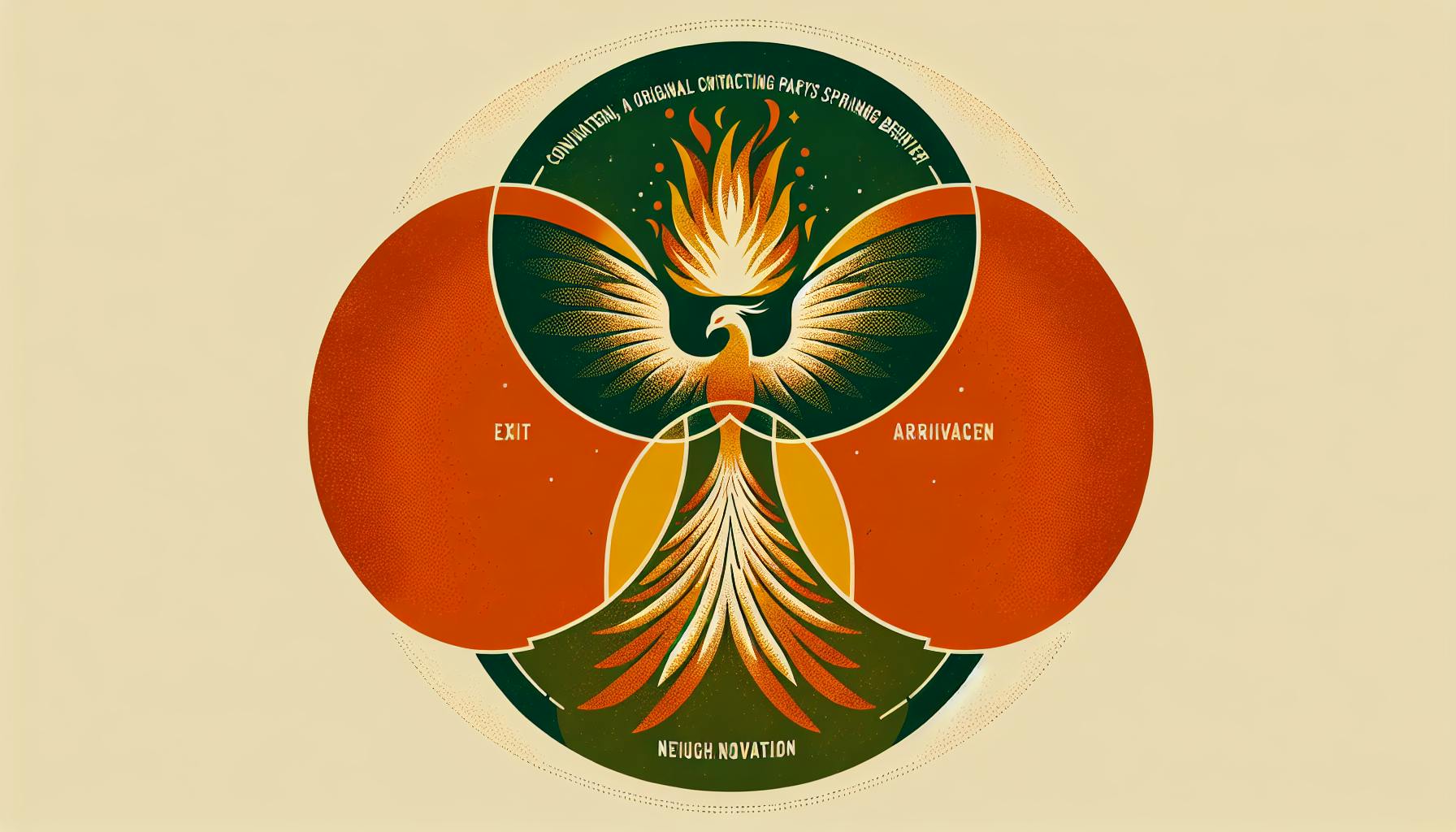Navigating complex legal procedures can be incredibly challenging. Many struggle to comprehend dense statutory language.
This article promises to explain Rule 54 in an accessible way - elucidating its purpose, key provisions, exceptions, and role in federal criminal procedure.
You'll gain clarity on concepts like the Rule 54(b) motion, the interplay with other federal rules, and how Rule 54 enables enforcement and recovery in financial litigation.Whether you're a legal professional or a layperson, this comprehensive guide demystifies the essentials of Rule 54 in federal criminal procedure.
Introduction to Federal Rule 54 in Criminal Procedure
Exploring the Purpose of Federal Rule 54
Federal Rule 54 outlines definitions, scope, and certain miscellaneous provisions in federal criminal procedure. It helps provide clarity on key terms, the reach of the federal rules, and exceptions or special cases that may apply.
The purpose is to establish boundaries and common understanding around federal criminal procedure. By delineating definitions, scope, and exceptions upfront, Rule 54 aims to prevent confusion or inconsistencies in how the rules are applied.
Deciphering Rule 54: Definitions and Scope
Some key definitions covered in Rule 54 include:
- "Act of Congress"
- "Law of the United States"
- "State"
- "Oath"
- "Federal judge"
It also clarifies that the Federal Rules of Criminal Procedure govern all criminal proceedings in federal courts. Certain territories are also covered.
The rule sets the scope regarding where federal criminal procedural rules apply. It aims to remove ambiguity on jurisdictions covered.
Understanding the Applicability and Exceptions of Rule 54
Rule 54 notes that the Federal Rules of Criminal Procedure may be applied to proceedings before federal administrative agencies to the extent they are consistent and relevant.
It also highlights some exceptions, such as bankruptcy proceedings, which have their own procedural rules. Appeals of magistrate judges to district judges are also exempt.
Overall, Rule 54 establishes vital baseline definitions, scope, and exceptions that enable consistent application of federal criminal procedure.
What is the Federal rule of Criminal Procedure 54?
Rule 54 of the Federal Rules of Criminal Procedure defines what a "judgment" is in the context of federal criminal proceedings. Specifically, it states that a "judgment" includes a decree or any order from which an appeal can be filed.
The rule goes on to state that a judgment should not contain recitals of pleadings, reports from a master, or records of prior proceedings.
In other words, Rule 54 establishes that a "judgment" in a federal criminal case refers to appealable orders, such as a final conviction or sentence. It also clarifies that judgments themselves should not summarize background information or prior procedural history.
The purpose of Rule 54's definition is to provide clarity around what constitutes a reviewable "judgment" that can trigger the appeals process in a federal criminal prosecution. By limiting judgments to appealable orders, it streamlines appellate review and prevents extraneous information from being included in court rulings.
Overall, Rule 54 serves an administrative function in federal criminal procedure by formally outlining what judgments are and how they should be formatted. This promotes uniformity and efficiency throughout the federal criminal justice system.
What is the rule of 54?
Rule 54 of the Federal Rules of Criminal Procedure provides guidance on the form and entry of judgments in criminal cases. Specifically, it states:
A default judgment must not differ in kind from, or exceed in amount, what is demanded in the pleadings. Every other final judgment should grant the relief to which each party is entitled, even if the party has not demanded that relief in its pleadings.
In other words, if the defendant fails to appear in a criminal case, the court cannot impose a harsher punishment than what the prosecution originally demanded. For any other type of final judgment, the court can order any legally permitted relief, even if it wasn't specifically requested.
Some key points about Rule 54:
-
It limits the court's ability to enter default judgments to only what was originally demanded. This prevents unfair surprise punishments when a defendant doesn't show up.
-
For all other judgments, the rule gives courts flexibility to order appropriate relief based on the facts and law, without being strictly bound to the initial pleadings.
-
This rule balances fairness to defendants with the court's authority to fully enforce the law.
So in summary, Rule 54 sets guidelines on judgments in criminal cases, restricting default rulings while giving latitude on final judgments, to ensure fairness and fulfillment of the law. It gives the court discretion while protecting defendants from undue harm if they fail to appear.
What is the rule 54 B reconsideration?
A motion to reconsider an interlocutory order is considered under Rule 54(b) of the Federal Rules of Criminal Procedure, which provides courts with the inherent procedural authority to reconsider, change, or modify an interlocutory order if sufficient cause is shown.
An interlocutory order refers to an order issued by a court during the pendency of litigation that does not constitute a final judgment. Common examples include orders regarding discovery, evidentiary issues, or procedural matters.
Under Rule 54(b), a party can file a motion asking the court to revisit an interlocutory order and change its decision. The rule does not provide specific grounds for reconsideration but rather gives courts broad discretion to reconsider interlocutory orders as needed in the interests of justice.
To obtain reconsideration under Rule 54(b), the moving party generally must show that reconsideration is necessary due to a change in controlling law, newly discovered evidence, clear error, manifest injustice, or other sufficient cause. The court will then review the motion and decide whether to affirm or modify the prior interlocutory order.
So in summary, Rule 54(b) allows a party to request that a court reexamine and potentially revise an interlocutory order during litigation if good cause is demonstrated, such as a mistake of law or fact or unfair prejudice. It serves as an important procedural mechanism for ensuring interlocutory orders remain fair and appropriate as a case proceeds.
sbb-itb-585a0bc
sbb-itb-585a0bc
sbb-itb-585a0bc
sbb-itb-585a0bc
What is a rule 54 motion?
Rule 54(b) of the Federal Rules of Criminal Procedure allows a court to direct entry of final judgment as to one or more, but fewer than all, claims or parties in a case, before the entire case is resolved.
For a court to certify a partial final judgment under Rule 54(b), two requirements must be met:
-
The court must expressly determine that there is no just reason for delay in entering a final judgment on the claims or parties covered in the order.
-
The order must contain an express direction for entry of judgment on those claims or parties.
If both requirements are satisfied, the partial final judgment can be appealed immediately, even though other claims or parties remain pending in the district court action.
Without a Rule 54(b) certification, any order resolving fewer than all claims or parties in an action would be interlocutory and not appealable until the district court action concludes. So Rule 54(b) provides a mechanism to obtain appellate review of a particular claim or party before the entire case wraps up.
The court has discretion in determining whether to grant Rule 54(b) certification. Relevant factors include judicial administrative interests, equities involved, and whether the certified judgment would be res judicata as to the claims and parties subject to appeal.
Overall, Rule 54(b) allows more efficient case management when appropriate, avoiding delay in appealing fully-resolved claims or parties until the end of complex litigation covering multiple issues or litigants. But certification should not be granted routinely or as a courtesy to counsel.
Comprehensive Analysis of Rule 54's Key Provisions
Rule 54(b) Motion: Final Judgments and Partial Adjudications
Rule 54(b) allows a court to direct entry of a final judgment as to one or more, but fewer than all, claims or parties in an action. This allows for an appeal of that judgment, even though the case is still ongoing with respect to other claims or parties.
For example, if a case involves multiple defendants, the court could enter judgment against one defendant while claims against other defendants remain pending. The losing defendant could then file a rule 54(b) motion to immediately appeal that judgment, rather than having to wait until the entire case concludes.
Courts consider factors like the relationship between adjudicated and unadjudicated claims, the possibility that the need for review might become moot due to future developments, and administrative efficiency when deciding rule 54(b) motions. Granting such motions can help streamline complex litigation.
Rule 54(c) and the Demand for Judgment: Flexibility in Relief
Rule 54(c) states that a final judgment should grant the relief to which a party is entitled, even if the party did not specifically demand that relief in its pleadings. This allows courts flexibility to fully remedy harms revealed during litigation.
For example, if a plaintiff requests only monetary damages but the evidence shows an injunction is also needed, the court can grant both. This embodies the equitable purpose of judgments - to make the injured party whole. It prevents cases where obvious remedies are barred just because the precise relief was not formally requested early on.
Courts caution that Rule 54(c) relief should still be reasonable and foreseeable from the pleadings. The rule is not meant to surprise parties with unforeseen outcomes at judgment. But overall, 54(c) promotes equity and efficiency in civil adjudication.
Time to File Rule 54(b) Motion and Implications for Litigants
Rule 54(b) motions must be filed no later than 28 days after the entry of judgment that is being appealed. This relatively short timeline prevents delay in complex cases with multiple parties. It forces litigants to promptly evaluate the need for an immediate appeal.
Parties should analyze whether allowing certain judgments to become final through a 54(b) motion is strategically wise or if waiting until all issues are adjudicated is preferable. Since appeals are disruptive and costly, parties must weigh factors like the strength of their case, importance of immediate review, and resources available.
The 28-day deadline also reduces uncertainty about the status of a judgment. Once that period passes, parties know that judgment will not be immediately appealable while the case continues. This helps guide litigation strategy and settlement decisions.
Navigating Exceptions and Special Considerations Under Rule 54
Rule 54 of the Federal Rules of Criminal Procedure outlines general provisions for criminal cases. However, there are some important exceptions and special considerations when applying this rule.
Rule 54(b) Certification: Criteria and Judicial Discretion
Under Rule 54(b), a court may direct entry of a final judgment as to one or more - but fewer than all - claims or parties in a case. However, the court must expressly determine that there is no just reason for delay. The certification process allows the court discretion, but it must clearly set forth reasons explaining why there is no just cause for delaying entry of judgment. Relevant criteria include the interrelationship or overlap of issues, the likelihood of subsequent appeals, and concerns of judicial administration.
The Intersection of Rule 54 and Other Federal Rules
Rule 54 intersects with several other important federal rules governing criminal procedure:
- Rule 52(a) outlines harmless error and plain error review standards that apply when interpreting rulings under Rule 54.
- Rule 72(b) allows parties to object to a magistrate judge's order on nondispositive pretrial matters governed by Rule 54(b).
- Under Rule 23(h), the court may refuse to award costs to a prevailing party if it finds the government's position was substantially justified. This carves out an exception to Rule 54(d)'s default cost award.
So while Rule 54 establishes a general framework, its application is refined through other rules.
Rule 54(b) Motion for Reconsideration: Pathways and Pitfalls
Parties may file a motion asking the court to reconsider an order under Rule 54(b). However, litigants face strict deadlines - generally 28 days after entry of the order. Courts also tend to apply a very high standard to succeed on these motions. Mere disagreement with the prior ruling or rehashing old arguments is not enough. Instead, parties must show the court clearly erred in law or fact, or present newly discovered evidence. While Rule 54(b) motions provide a procedural mechanism for reconsideration, the threshold for relief is difficult to satisfy.
Rule 54 in the Context of Federal Criminal Procedure
Rule 54 plays an important role within the broader framework of Federal Criminal Procedure. It interacts with statutory provisions in Titles 18 and 28 of the United States Code, as well as Department of Justice policies outlined in the Justice Manual.
Comparing Rule 54 with 28 U.S.C. and 18 U.S.C. Provisions
Rule 54(b) allows for reconsideration of interlocutory orders in criminal cases when certified by the court. This is similar to 28 U.S.C. §1927, which provides for liability for unreasonable and vexatious multiplication of proceedings. However, Rule 54(b) is specific to criminal cases, while 28 U.S.C. §1927 applies more broadly.
There are also intersections with Title 18 U.S. Code sections defining criminal procedure. For example, 18 U.S.C. §3041 outlines powers of courts and magistrates, which relate to Rule 54 provisions on magistrates.
Rule 54 and the Justice Manual: Understanding DOJ Policies
The Justice Manual contains several sections connected to Rule 54 applications. JM 4-10.110 discusses litigation against the United States, referencing Rule 54(d)(2) on attorney's fees. JM 4-3.200 covers compromise of claims, enabled by Rule 54(b) certifications.
Department policies on financial litigation and civil remedies also cite Rule 54. The rule facilitates enforcement and recovery procedures under 4-9.000 and 4-11.000.
Financial Litigation and Rule 54: Enforcement and Recovery
Rule 54(b) motions can certify decisions on financial penalties and forfeitures, expediting enforcement and supporting recovery efforts. This aligns with DOJ goals outlined in 4-9.000 Financial Litigation Policy and 4-11.000 Civil Financial Litigation Activity. The rule provides a pathway for progressing financial litigation.
In total, Rule 54 occupies an integral space within the landscape of federal criminal procedure. It connects meaningfully to statutory code and Justice Manual policies on litigation procedure, compromise, and financial remedies. The rule ultimately facilitates efficiency, enforcement, and cost recovery.
Conclusion: Synthesizing the Essentials of Rule 54
Summarizing the Core Principles and Impact of Rule 54
Rule 54 plays a pivotal role in federal criminal procedure by governing the entry of final judgments in criminal cases. Some key takeaways regarding its impact include:
-
Rule 54(a) defines what constitutes a "judgment" in a federal criminal case, clarifying when a matter is officially closed.
-
Rule 54(b) enables courts to enter final judgment on some - but not all - charges against a defendant, facilitating partial resolution.
-
Courts can certify decisions as "final" under Rule 54(b) even when a case involves multiple defendants or claims.
-
Rule 54 judgments trigger deadlines for appeals and motions for reconsideration.
-
There are exceptions where Rule 54 judgments may not be considered "final," such as conditional plea agreements.
By delineating finality, Rule 54 shapes appellate rights, sentencing timelines, and case closure. It balances efficiency with protecting defendants' interests during complex, multi-faceted proceedings.
Reflecting on Rule 54's Role in Federal Criminal Procedure
Rule 54 interlinks with other key rules and statutes governing federal criminal cases. For example, Rule 54 judgments enable deadlines under Rules 29, 33 and 34. Compliance with laws like 18 U.S.C. 3771 also requires understanding final judgments' implications for victims' rights.
Ultimately, Rule 54 advances justice by crystallizing when the "final word" on a criminal case is uttered. But its application must factor in the broader procedural framework. Legal practitioners must continually reflect on Rule 54's functionality alongside intersecting rules, rights and regulations.


